Crete – Where beauty walks hand in hand with the beast
Crete and the Minotaur – Beauty & the Beast, Legends & History – A Beyonder look
Crete! The name sounds nice and exotic… And it is…
150 miles long and 30 miles wide, this isolated land mass floats in between the Libyan and Aegean Seas with 15 mountain ranges guarding it. Metaphorically speaking, this is a land that’s lying in between history and mythology.
Why visit Greece
A trip to Greece is a tailor-made jaunt for any person who travels in search of unique experiences – be it pristine beaches, tranquil islands, palaces, caves or just the cobbled streets and the food or wine. If you are a foodie, you can indulge without any guilt. After all, the WHO has declared it as a city with healthy cuisine.
Oh, and by the way, this island was the centre of the bronze age Aegean civilization, the Minoan civilization, that flourished for 1200 plus years. It got wiped away in a massive flood in 1100 BC. Interesting isn’t it? Read on to know about the best of Greece…and why it’s the best time to tour Greece.
Minoan Civilization – The Island of Minoans
There’s something seductive about the idea of a lost civilization – somehow the links between mythology and history across geographies thrill me, My trip to Greece revolved around this idea. This civilization which vanished thousands of years ago, was re-discovered as late as the 1900’s ! Ideal for the links I mentioned, don’t you think?
There’s a common saying about Crete, “Where beauty walks hand in hand with the beast” … I realized how true it was after spending a few days in this island. Here are some of the stories that circle around Crete.
The Bull and King Mynos
Crete was ruled by a powerful king called “Minos” known for being strong headed and arrogant. Mythology has it that he was the son of Zeus and Europa. The story goes that he prayed to the God Poseidon for a mighty bull.
Poseidon granted his wish and gifted him a bull on the condition that it would be used for good deeds and will be offered back as a sacrifice. However, the king had other plans in his mind. He betrayed the God and instead offered another bull as a sacrifice.
This offended Poseidon, and as a punishment, he instilled sexual feelings in Pasiphae, the wife of Mynos, towards the white bull. Pasiphae approached Daedalus, the then Mr Fix-It for any problems, seeking help on the issue.
The Birth of the Minotaur
Daedalus was known for his ‘never-say-no’ attitude towards his Masters and he organised a meeting between the bull and Pasiphae.
The Minotaur was born as a result of their union. A hideous hybrid with the body of a man and head & horns of a bull. No wonder, Euphrates wrote about him as “A monster child, a hybrid that has no place on Earth”.
Daedalus designed a vast subterranean labyrinth to hide this shameful offspring of Minos’s wife, Minotaur, away from the public eye. Minotaur grew up in the hideout and his existence remained a secret for long time
Crete and Athens – a troubled relationship
After a few years, Minos’s elder son Aggreus, an athlete par excellence, decided to participate in the Panathenaic games in Athens. He had a clean sweep at every game he played and this angered the local competitors, who eventually got him assassinated.
Furious over his son’s death, Minos decided to wage a war against Athens. After a long battle both sides made peace with a special agreement – an arrangement to send “tribute children”, seven youth and seven maidens every seven years from Athens to satisfy the Minotaur’s craving for human flesh.
The Entry of Theseus
Theseus, the Prince of Athens, was devastated by what was going on with Athens and its people. He decided to put an end to this situation. He vowed to kill the Minotaur. For this, he named himself in the list of the next cycle of people who were to be sacrificed.
Before leaving for Crete, Theseus’s father asked him to hoist a white flag while returning to Athens. This was to be a sign of his being alive. When the ship reached Crete, Minos’s daughter Ariadne saw Theseus and instantly fell in love with him.
Ariadne shared her feelings with Theseus. She agreed to help him kill her monster brother if he accepted her as his lawful wife. Theseus accepted her proposal and started planning for the big day.
Ariadne approached Daedalus, who offered her a piece of advice and a bundle of strong linen.
The Death of the Minotaur
Before entering the labyrinth, Theseus tied one end of the linen to his waist and the other one to the entrance. This was to avoid getting lost in the maze. He killed the Minotaur and freed his other fellow countrymen. He then sailed back to Athens with Ariadne.
In the night, the God of Wine Dionysus, appeared before Theseus. He claimed right over Ariadne since her father, Minos, had promised to get Ariadne married to him. Fearing God’s wrath, Theseus decided to let go off Ariadne on the island of Naxos.
Though he willingly parted with Ariadne, he was heartbroken. He started drinking profusely. As a result, he forgot to hoist the White flag while returning to Athens.
His father Aegis, saw the ship without the white flag and assumed his son to be dead. In despair, he jumped into the sea at Cape Sounion. Thus, the sea came to be called the Aegean Sea.
Knossos and the Minoans
Knossos is a vast Bronze Age archaeological site in Crete. It is spread across an area which is 3 times the size of the Buckingham Palace ground.
Crete was the centre of all proceedings that took place in the Minoan civilization. A lot has been said and researched about the Minoan civilization post-excavation of the site in the 1900s. Here are some interesting facts and stories about the Minoans and Knossos that intrigued me. There are many such stories that would possibly require a much longer blog to write. I will get down to putting them up possibly later.
The discovery of Minoan Civilization
Sir Arthur Evans accidentally discovered the Minoan civilization in the 1900s. Before the discovery, the only known reference of Minoans was found in the works of Homer.
How did they get the name Minoans?
The actual name of the Minoans is not known as it hasn’t been mentioned anywhere in the past. They were named after their King, Minos. However, even Minos is not the actual name of the king. Actually, it’s a title given to the administrator, an ancient way of referring to a governor or leader. Somewhat like the term Maharaja.
Different Gates for Different folks

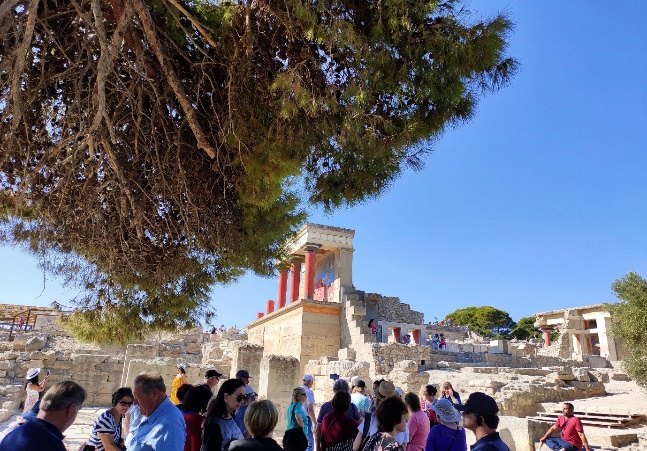
Knossos had four gates from four different directions. There were particular gates reserved only for athletes. Athletes held a significant role in the Minoan as well as Greek civilization. They were regarded as warriors. In fact, some aspect of war inspired every sport that was played. For instance, those who fought with spears in the war played the Javelin throw.
Mythos Mountain
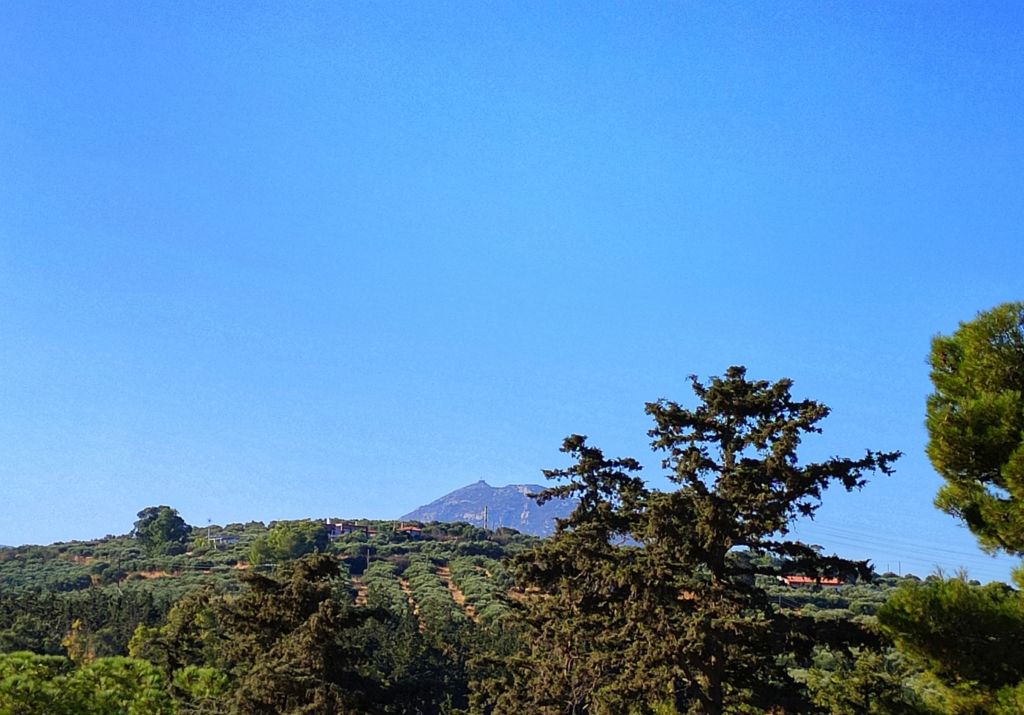
The mountain in the background of this image is the Mythos Mountain. The mountain is 15 miles away from Knossos. The Minoans created an aqua duct from the mountains to the Palace to store the water for daily chores. The aqua duct is not visible anymore. The floods could have destroyed it.
Role of women in the Minoan civilisation
The Minoans treated women at par with (or better than) men. The scriptures and murals suggest that women also held high positions in the administration. Goddesses played a pivotal role in their traditions and beliefs. Male deities seem to be less revered in comparison. The main Goddess was the “Mistress of Animals”.
Sanctum & the Light Well
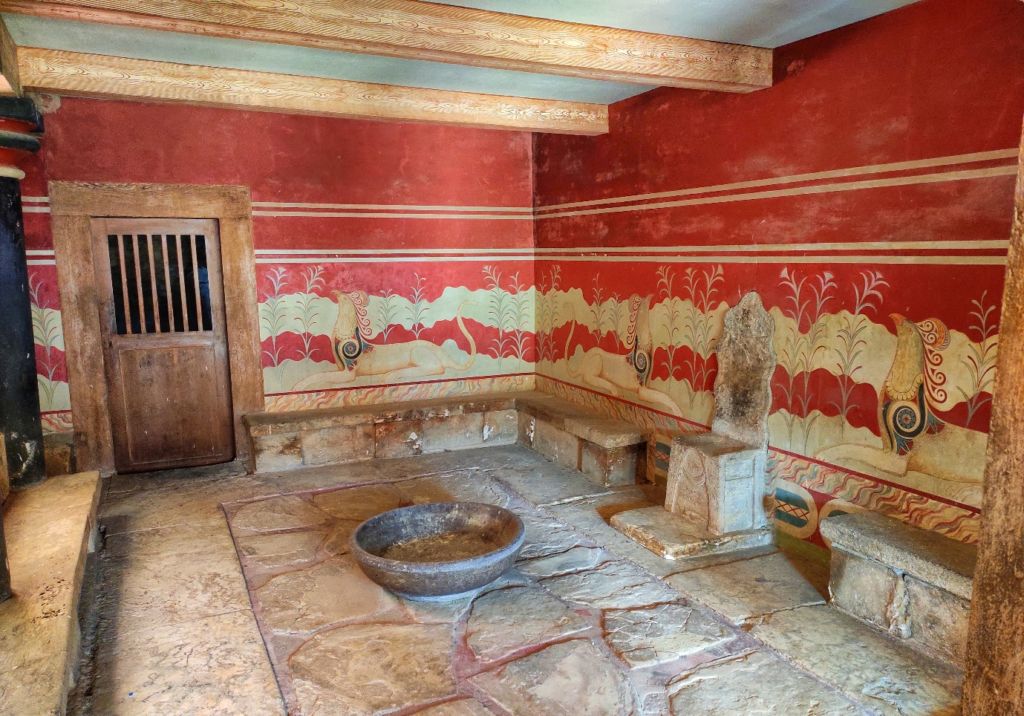
The Sanctum and the Light Well was the Queens’ abode, with a throne facing Mythos mountain.
Parallel to the Queen’s seat, there’s an opening through which the water from the mountain was collected in a reservoir. The basin placed right in front of the throne consisted of the same water.
During the Solstices, the Sun’s movement was exactly parallel to the opening for water. They timed the Queen’s entry into the sanctum to match with the sun passing through the sanctum. As a result, the golden rays brightening the room made the queen look divine to the people present there.
People considered the queen to be a Goddess and dutifully carried her orders. This led to political dominance and unquestioning obedience.
Trade: the backbone of Minoan civilization
The strange aspect of Minoans is the fact that they had no enemies. The assertion comes after finding no signs of fortifications to protect them.
Minoans were exceptional at trade and craft. Pottery, weapons, olives and olive oil were the main exports. They traded through the sea which provided them with an extra edge over others.
We can hypothesize a lot about a civilization by studying the animals that they worship or follow. Civilizations that domesticate only sheep end up becoming nomadic since they travel in search of grazing lands. Similarly, those that domesticate the horse or camel indulge in trade and warfare since that is their strength.
The Worship of the Bull and the economy
The Minoans not only domesticated the bull, they also worshiped it as a symbol of strength, fertility and prosperity. They became an advanced civilization that relied on agriculture and settled as a community at one place. With settlement and agriculture came buildings, roads, canal etc, signs of development and prosperity. And of course, legends! Lots of legends!
The flourishing trade was the reason behind the prosperity of the Minoan civilization. This was because of good crops. Good agricultural practices were the reason for good crops. Major factors were the water storing mechanism from Mythos and the bulls used for ploughing.
Ancients Jars
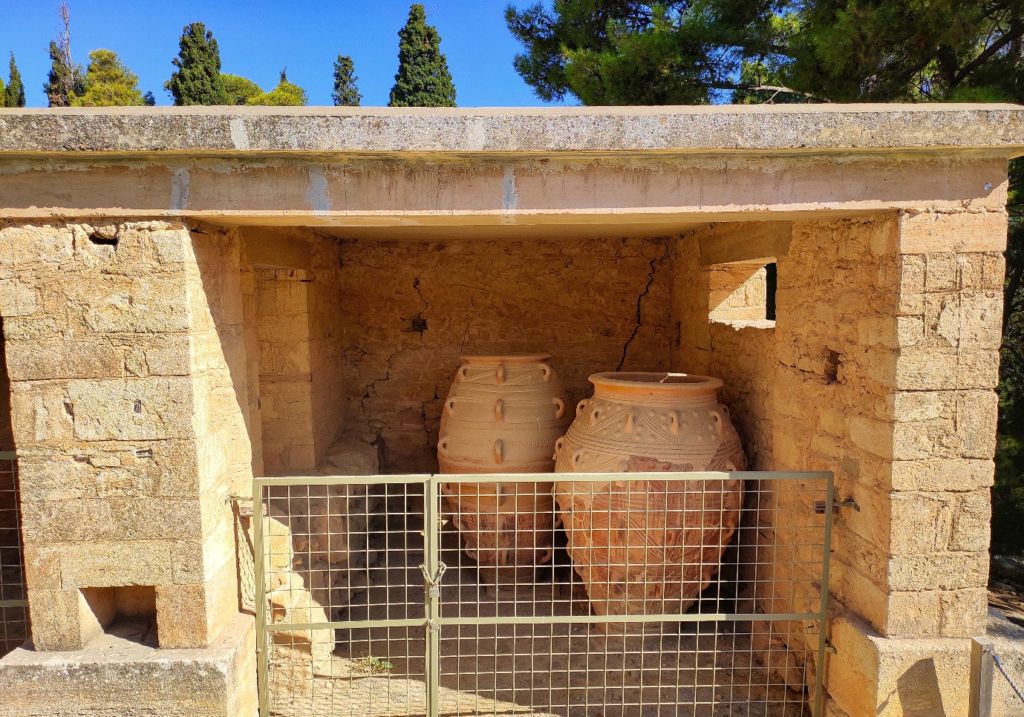
These massive jars stored the offerings and gifts to the Queen. The jars also stored crops and tools for export.
Where did the Minoans go?
There’s no accurate information on how the Minoan Civilization came to an end. One reason could be defeat in war. Some also say that a volcanic eruption or flood was the reason for the downfall of this mega civilization.
What do Historians & scientists say?
Most people dismiss the story of the Minotaur as fictional. Yet, as they say, “there’s no smoke without fire”. The legend could be the irrational conclusion of our ancestors who couldn’t comprehend some occurrences. They often attributed unexplained natural calamities or events to supernatural processes. Scientists dissect stories like these for clues to analyze the myths.
As per science, there were no human bull hybrids. However, if you dig deep, the earliest written material about the Minotaur doesn’t even disclose its physical form. People believed that it lived beneath the ground and when it roared things worsened up-above the ground. Several myths suggest that Daedalus carved the labyrinth beneath the island of Crete. However archaeological findings came empty handed when they searched for the same.
Seismic activity in Crete
Crete is the visible tip of Aegean block, that sits on top of Nubian block. The ocean is the insulator between both. This forms a Subduction zone. “Uplift” happens when the Nubian block moves and pushes the Aegean block towards the top.
Minor earthquakes are a result of this. They are common in Crete. An aberration was the year 2014, which experienced 1300 tremors! Fossil records and geological evidence also suggest serious “uplifts” during the time of King Mynos.
The Minotaur and Seismic activity
The ancestors associated these tremors with the Gods and Demons. In those times, God was responsible for an event that brought productivity. And the Demon for a catastrophe. This was their reasoning or plausible explanation for the frequent earthquakes that impacted their daily lives.
The fact that it was actually due to seismic activity in the region was not in picture. They found it easier to attribute it to a legend rather than science.
The Minoans were very scientific in their planning of the cities and water reservoirs etc. But they probably relied on faith when it came to earthquakes. That’s how the legend passed over many generations.
“The Bull charges because it does and the man leaps because he chooses to”
This is an old Cretan saying that point to the fact that the ultimate success is in overpowering the Minotaur within oneself. The Minotaur stands for the animal instinct within us. Theseus became immortal by overpowering the Minotaur for the sake of humanity. In the same way each one of us have demons within. Each of us has a Minotaur residing in the labyrinth of our hearts and minds.
That’s nothing but a raging bull which is doing its habitual work. It’s up to the “Theseus” in us to look within and overpower the Minotaur. Quite similar to the philosophy behind the Indian epic, the Mahabharata, don’t you think? According to some, the Mahabharata war is symbolic of the fight between good and evil within our minds. Kurukshetra, the legendary battlefield, is actually our mind!
Greek mythology and Philosophy
Greek mythology is full of events with a philosophical touch. Take the example of Theseus, who conquered the Minotaur and fell prey to his own emotions. Theseus couldn’t control his emotions after losing Ariadne. He lost himself in alcohol and forgot to hoist the white flag, which led to his father’s death.
Icarus fell prey to the “charging bull” in him and before he could “leap”, he got overconfident with his power of flying. Despite his father Dedalus’s warning him, he flew too high which led to the melting of his wings and his fall.
The picture in the beginning of this blog is of a lovely ceramic work that I saw in Crete. It seems to typify this philosophical point of overpowering the animal within, in order to achieve one’s fullest potential.
Getting to Crete
Air connections and ferries to Athens and the other islands are frequent and comfortable. Remember to book the fast ferries. It is preferable to book in advance especially during the tourist season. You should keep a few days to explore Crete with its history, natural beauty and wine.
To travel to Greece, click here https://beyonder.travel/holiday-destinations/greece/
In case you are keen on experiential travel and wish to get travel ideas on exploring the world, visit https://beyonder.travel
(Stories by Anand Parameswaran compiled by Arfath)


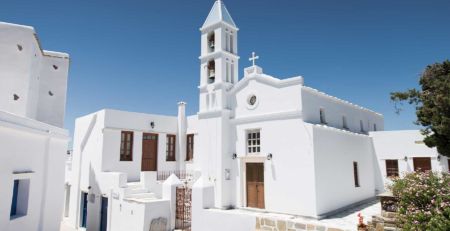

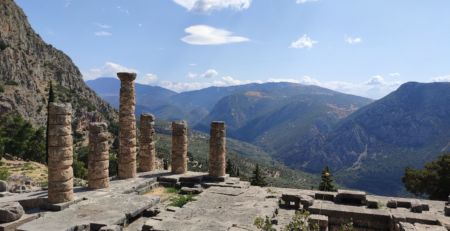
Leave a Reply